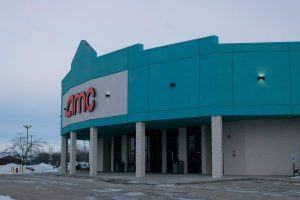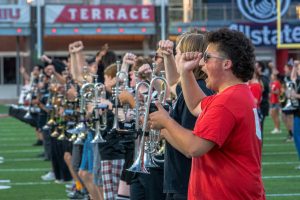NIU joins DUNE project
September 12, 2016
DeKALB | Dan Boyden, third year physics graduate, is hoping to be sent to Switzerland to work hands-on for DUNE, an international particle experiment including more than 140 labs and universities across 27 countries.
DUNE, which stands for Deep Underground Neutrino Experiment, aims to reveal things about the universe, like why the world has more matter than antimatter. NIU was asked to join the project which is being led by Associate Physics Professor Vishnu Zutshi and Physics Professor Michael Eads.
Boyden got involved in the experiment when a friend told him that his professor was looking for help on the project. Boyden said he saw the project as a great opportunity to network and get hands-on experience. Networking is vital in his field, and working on DUNE provides the opportunity to connect with many people, Boyden said.
Zutshi and Eads approached DUNE and were later asked to join the experiment as a result of Zutshi’s knowledge on the topics the experiment explores, like photon detectors.
“The point to make is this is a new effort here at NIU,” Eads said. “We’re hoping to ramp this up and get more people involved in the near future.”
The DUNE project hopes to measure the properties of neutrinos, a nearly neutral fundamental particle of the universe, as they travel. There are three types of neutrinos, and as they travel, they can change from one type to another. This process is called oscillation, Physics Professor David Hedin said.
NIU’s task for DUNE is to build and test the photon detector systems that will measure the neutrino oscillations as they travel. Boyden was assigned the task of testing these systems, which he said were essentially light detectors.
“I’m performing the tests that are needed for NIU to perform their part,” Boyden said. “Right now, we’ve been mostly just measuring background noise and things like that associated with electronics.”
While Boyden is the only student involved in the project, Eads said he hopes to provide opportunities for more graduate and undergraduate physics students in the future.
The photon detectors Boyden is working with will tell scientists on the DUNE team when a neutrino changes, which could allow them to determine the probability of such action, Eads said. Determining that probability could tell scientists why the universe has more matter than antimatter, which allows people to exist, Hedin said.
“We still have a big question mark about what caused the matter-antimatter difference,” Hedin said. “The guess right now is that the matter-antimatter difference in our universe is in the type of particles like electrons and neutrinos.”
Hedin, Eads and Zutshi work at Fermilab as visiting scientists. Fermilab and NIU have a partnership that Hedin said gives students and faculty great opportunities. Eads said the close proximity NIU has to Fermilab enhances that.
Fermilab will house the proton accelerator and produce the neutrinos that will be measured in the DUNE experiment.
“So what the DUNE project is all about is studying neutrinos,” Eads said. “Neutrinos are one of the particles that make everything up, and we’re just trying to better understand how neutrinos work and what their properties are.”
DUNE plans to do this by using the world’s largest neutrino beam to shoot the neutrinos from Fermilab, Outer Ring Road, located in Batavia, to Sanford Underground Research Lab in Lead, South Dakota. As the neutrinos travel underground, DUNE will be monitoring their properties and looking for a change in the type of neutrino.
Because of the massive scale of the project, the first beam is not expected to be launched until 2026, but NIU has already begun work on its contributions.
“It’s one of those fun research things where it’s not immediately clear how useful it’s [going to] be,” Eads said. “But if you understand the universe better, then it has to be good for something.”






